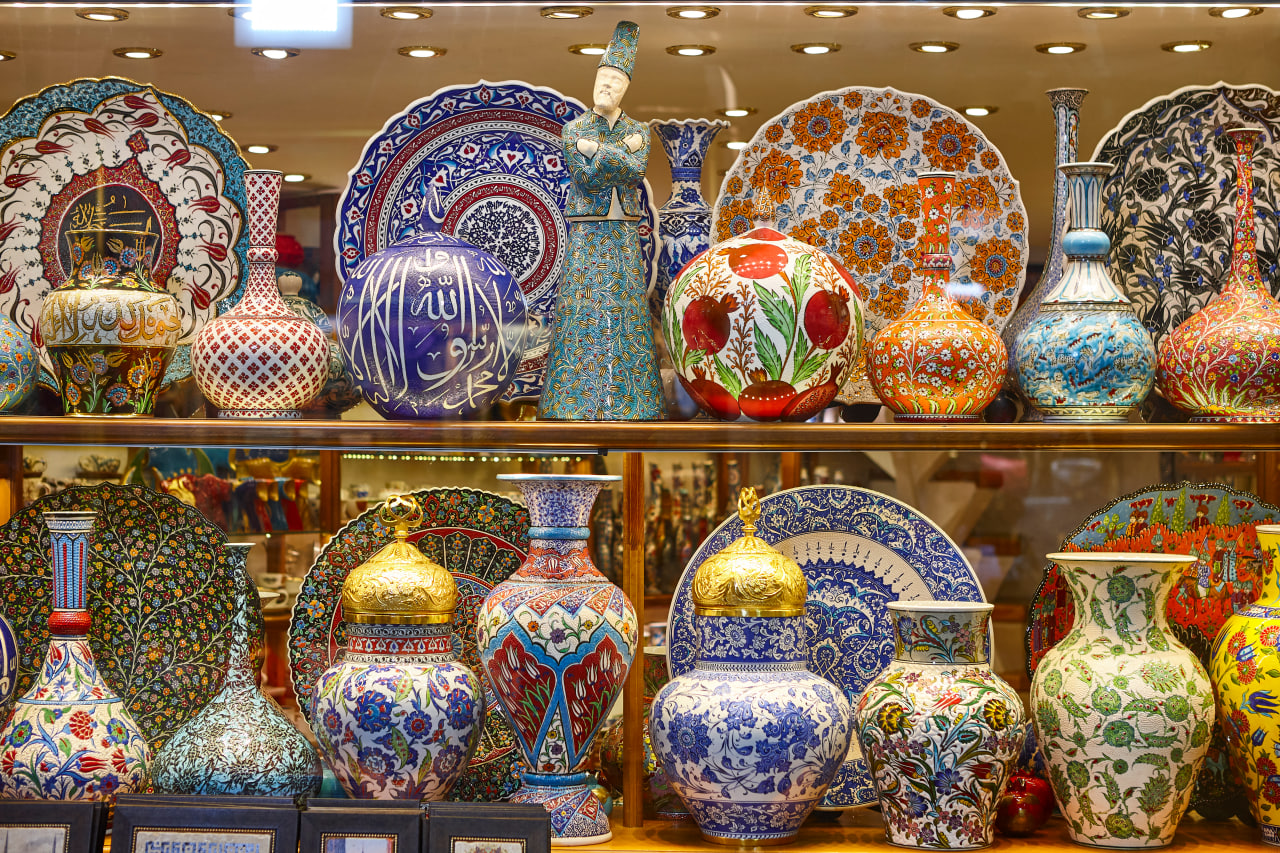Introduction
Iranian handicrafts—ranging from metalwork and ceramics to textiles and pottery—reflect centuries of artistry, culture, and precision. Despite annual exports exceeding $400–450 million, most of these goods reach familiar markets, leaving vast potential in Eastern Europe and the Middle East untapped (tehrantimes.com). This article explores the growing demand, competitive advantages, market entry strategies, and actionable steps to help Iranian businesses unlock these promising regions.
1. Market Potential in Eastern Europe & the Middle East
🌍 Eastern Europe
Recent IRNA statements reveal plans to establish Iranian handicraft markets in France, Germany, Italy, Spain, Britain, and beyond (en.irna.ir). Yet these remain pilot projects. With Eastern Europe’s increasing appreciation for ethnic design and rich cultural narratives, Iran could expand its exports significantly by focusing on ceramics, metalwork, textiles, and glassware.
🌙 Middle East
The Middle East is already a key destination, with countries like UAE, Iraq, Qatar, Saudi Arabia, and Middle Eastern trade fairs—like Doha’s Design Doha—highlighting modern-traditional fusion crafts (thetimes.co.uk). However, despite cultural similarities, many Iranian artisans are absent from lucrative markets in Qatar, Bahrain, and Oman, representing missed opportunities.
2. Why Eastern Europe & the Middle East Represent Golden Opportunities
1️⃣ Cultural & Aesthetic Alignment
Persian art motifs—geometry, arabesques, floral patterns—resonate strongly in Islamic regions. Similarly, Eastern Europe’s appreciation for artisanal quality and historic narratives aligns well with Iranian craftsmanship.
2️⃣ Rising Demand
Middle Eastern consumers increasingly seek handcrafted home décor, artisanal jewelry, and luxury accents—especially during high-income festivals and weddings.
3️⃣ Geographic & Trade Ease
Iran's proximity allows faster, cost-effective logistics via air, sea, and land corridors—an advantage over distant producers.
4️⃣ Existing Export Infrastructure
Iran has established certification bodies, artisans' unions, and government support mechanisms to facilitate entry into new markets (irancharter.ir).
3. Strengths of Iranian Handicrafts
Diverse product spectrum: metal crafts, ceramics, woodwork, textiles, glass, leather .
Authentic heritage brands: UNESCO-listed crafts like Rasht embroidery and Kalpouregan pottery, with deep cultural roots (en.wikipedia.org).
Artisan density: over 500,000 active artisans across 299 specialties (tehrantimes.com).
Export volume growth: recent growth of 11–53% year-over-year (tehrantimes.com).
4. Barriers Limiting Market Expansion
| Barrier | Details |
|---|---|
| Limited brand awareness | Buyers in EU and GCC don’t yet recognize Iranian handicrafts as distinctive |
| Regulatory complexity & logistics | Customs codes, trade licenses, and VAT procedures vary and deter SMEs |
| Packaging & presentation inconsistency | Lack of market-appropriate packaging reduces retail appeal |
| Payment sanctions & banking hurdles | Business flagged with “Iran” or “Persia” can be blocked on platforms (tehrantimes.com, irancharter.ir, persianonlineshop.com, reddit.com) |
5. A Strategic Roadmap to Unlock These Regions
✅ A. Market Research & Segmentation
Identify competitor crafts rotating through Eastern Europe (e.g., Balkan ceramics).
Analyze customer behavior in Middle East—expos like Design Doha and Dubai Design Week.
Target niche segments: Islamic décor, luxury gifts, UNESCO-certified art.
✅ B. Develop Export-Ready Product Lines
Highlight UNESCO crafts like Rasht embroidery, Kalpouregan pottery, Termeh textiles.
Ensure quality: consistent designs, certified materials, and artisan attribution.
✅ C. Invest in Branding & Packaging
Multilingual packaging: English + local language (e.g., Polish, Arabic).
Premium branding includes product history, artisan profiles, and origin certificates.
✅ D. Obtain Certifications & Provenance
ISO and ISO 9001 where relevant.
Cultural authenticity via artisan signatures, QR-coded backstories.
Government-backed certificates to bypass trade sanctions loopholes.
✅ E. Leverage Export Support & Platforms
Attend international trade fairs with joint booths, e.g., Iranian pavilion in Europe and Gulf expos (thetimes.co.uk, en.wikipedia.org).
Partner with chambers of commerce and participate in B2B matchmaking .
✅ F. Build Distributor & Agent Networks
Collaborate with Eastern Europe’s boutique home décor retailers and luxury gift shops.
Choose GCC distributors who serve hotel chains and high-end retail.
✅ G. Create Market-Specific Collections
Tailor designs to local tastes: Nordic-style finishes for Europe; luxury Middle Eastern salts and mother-of-pearl inlays.
6. Action Plan & Timeline
| Timeline | Actions |
|---|---|
| 0–3 months | Research, product audit, packaging update |
| 3–6 months | Secure partner certifications, design collectable SKUs |
| 6–12 months | Debut at trade fairs (Milan Design Week, Design Doha), pilot export |
| 12+ months | Assess performance, refine collections, scale via retail partnerships |
7. Success Cases & Government Support
Rasht embroidery displayed internationally in the Metropolitan Museum of Art (en.wikipedia.org, thetimes.co.uk, en.wikipedia.org).
Kalpouregan pottery is recognized as world’s first living pottery museum (en.wikipedia.org).
Government and private sector coordination through Iran Chamber of Commerce and Cultural Heritage ministry is paving the way for market opening in 7 European countries (tehrantimes.com).
8. Risk Management & Sanctions Navigation
Utilize alternative banking, local trade agreements, and digital platforms avoiding direct references to "Iran" (reddit.com).
Register trademarks and brand names without “Iran” in payment gateways or platforms.
Mitigate currency risk and customs delays via local partnerships and bonded warehouses.
9. Cultural and Emotional Branding
Tell the story—e.g., “woven by Gilan women with 500-year history” or “hand-pressed in Baluch sands since 3000 BCE”.
Transparency builds trust: show the artisan, village name, and the cultural heritage behind each piece.
10. Projected Outcomes
Increase export value by 30–50% over 2–3 years with entry into Eastern Europe and GCC.
Position Iran as a prestige handicrafts brand, not just a large-volume exporter.
Empower artisan communities across Iran’s provinces—from Gilan to Sistan—through sustainable income and global exposure.
Conclusion
Iran’s handicrafts represent a deep vein of cultural authenticity and aesthetic value, yet remain underexposed in Eastern Europe and the Middle East. By adopting a strategic push—via targeted branding, certification, local partnerships, and compliance—Iranian artisans and exporters can transform this latent potential into real, sustainable growth.
✅ Call to Action
Are you an artisan, exporter, or trade body aiming to expand into GCC or Eastern Europe?
📩 Contact us to build market-specific collections, create export-ready packaging, and plan entry at major trade events. Let's bring Iranian artistry to the world stage!


